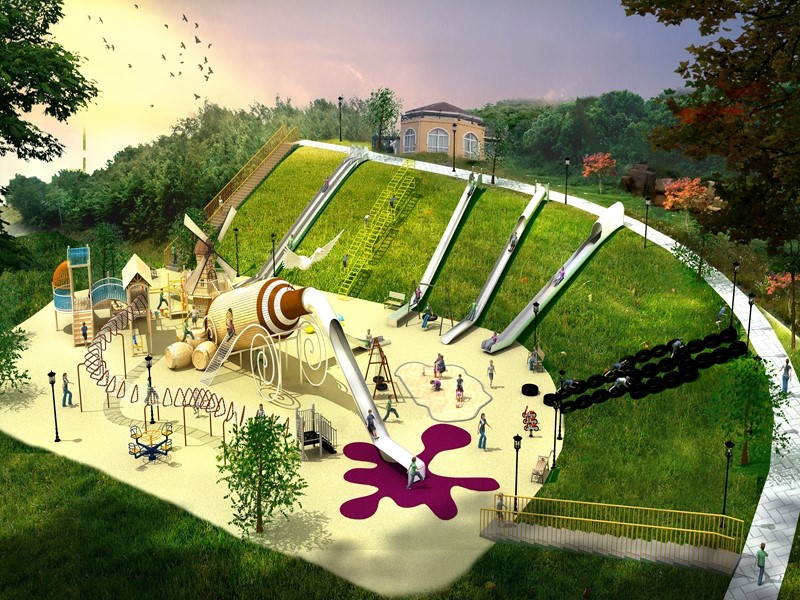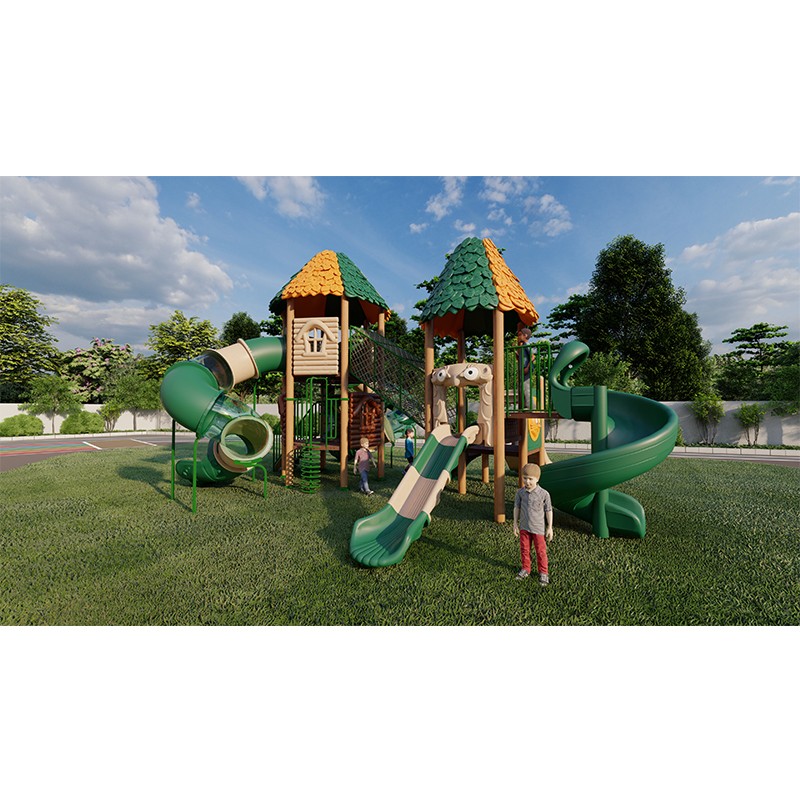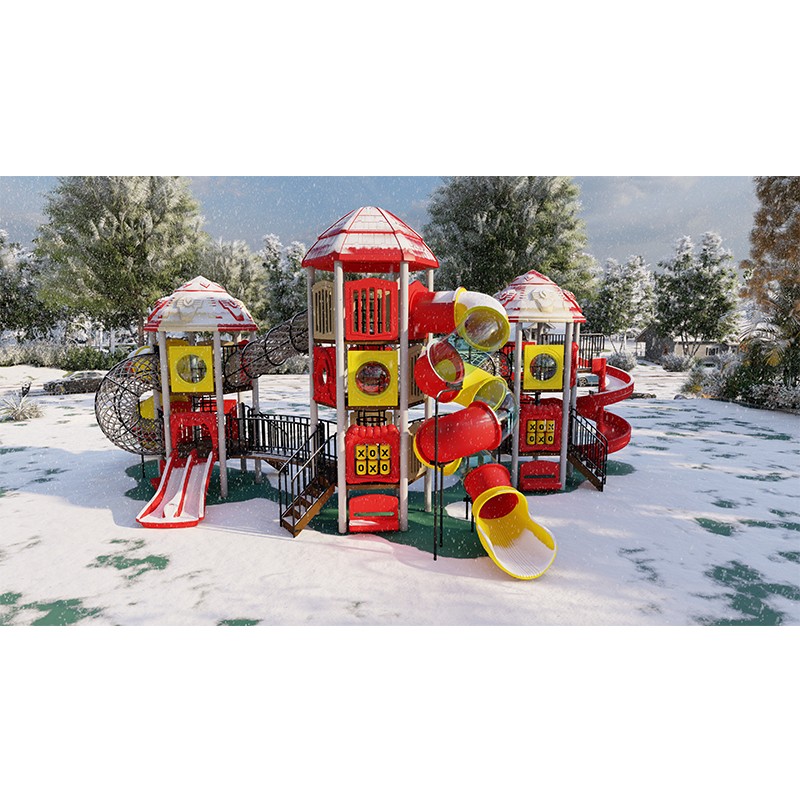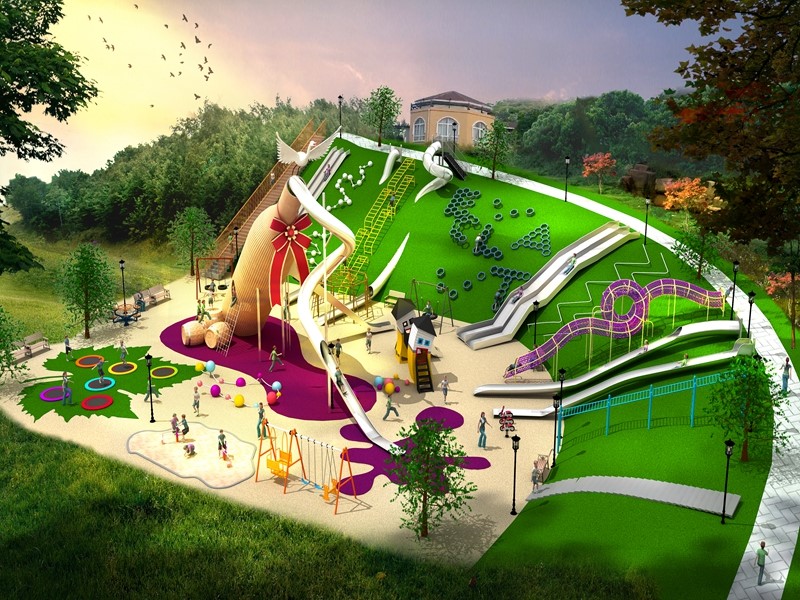Please contact us!
Commercial Playgrounds
Categories:Playground equipment
Size(CM):
Price:$0USD
Play Events
Commercial playgrounds are developed to provide fun for children ages 14 and under[1] in a safe environment. There are distinct differences between Commercial and Residential Playgrounds.
Commercial playgrounds are developed to provide fun for children ages 14 and under[1] in a safe environment. There are distinct differences between Commercial and Residential Playgrounds. Residential Playgrounds, though safe, are typically made out of lumber and do not have safety guidelines set up by different associations. The safety of the Commercial Playgrounds is governed by several different organizations. They include: Consumer Product Safety Commission (CPSC),[2] National Program for Playground Safety,[3] A.S.T.M. International,[4] ADA Accessibility Guidelines,[5] and National Child Care Association.[6] One can usually find commercial playgrounds at public parks, fast food restaurants, indoor play places, schools, and churches. Prices for a commercial playground depend on size and the type of components on them. The prices range from typically $10,000 to $150,000.
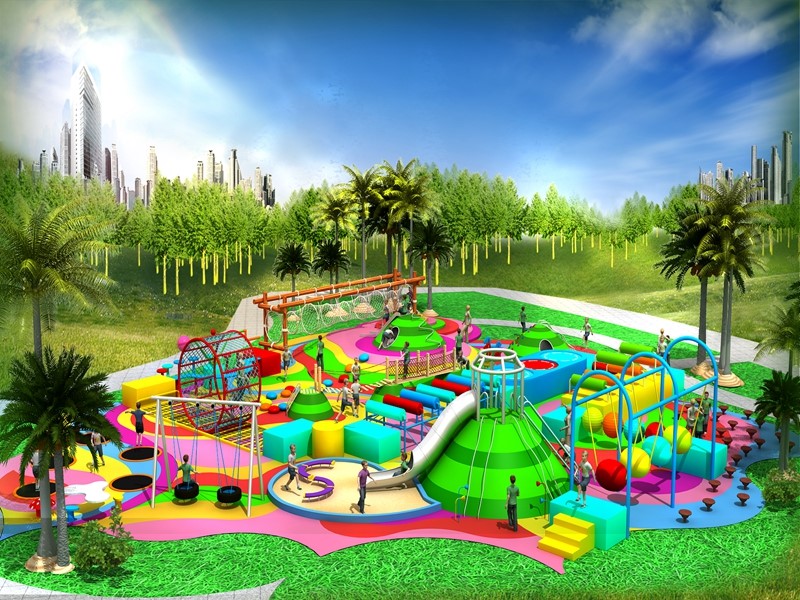
Commercial Playgrounds[edit]
Commercial Playgrounds are indoor or outdoor structures meant to handle large volumes of traffic. The playgrounds are designed with both safety and fun in mind to ensure a good time for the children and peace of mind for parents and guardians. In the past few decades the commercial playground industry grew tremendously. Commercial playgrounds started as slides and climbing structures being put next to one another and then eventually being combined. Since those early days Commercial playgrounds have grown into a multimillion-dollar industry with playgrounds having multiple levels, climbing structures, slides, play panels, and stations.[7][8]
Commercial Playground Safety[edit]
Commercial Playground Safety is not taken lightly by the commercial playground industry or customers alike. In order to make sure Commercial playground companies make the safest playgrounds they are governed by industry and multi-industry organizations and associations. As stated in the opening paragraph they include: Consumer Product Safety Commission (CPSC),[2] National Program for Playground Safety,[3] IPEMA[9] and A.S.T.M. International.[4]
CPSC (Consumer Product Safety Commission) helps govern playground safety by informing the public of unsafe playground practices and unsafe playground equipment. The CPSC also hands out booklets that inform consumers how to have their children play safe.[10] The CPSC also created a book of guidelines for public playground safety in 1981[11] that has shaped the commercial playground industry and their safety efforts.
NPPS (National Program for Playground Safety) governs playground safety by helping the public create safe and developmentally appropriate play environments for children.[12] The NPPS works closely with CPSC creating the guidelines put into the public playground safety book.
ASTM International is one of the largest voluntary standards development organizations in the world. They create technical standards for materials, products, systems, and services. They also create standards for playground equipment manufacturing.[13] The standard that must be met by playground equipment manufacturers is ASTM F1487-07, excluding sections 7.1.1, 10 and 12.6.1, ASTM F1292-04, and ASTM F2075-04.[14]
IPEMA (International Playground Equipment Manufacturers Association) is a third-party certification service. IPEMA makes sure that playground manufacturers follow the ASTM Standards and the Standard Consumer Performance Specifications for Playground Equipment for Public use.[15]
Safety Statistics[edit]
Falls account for approximately 75% of all playground-related injuries.[16]
9 out of 10 serious injuries (mainly head injuries and fractures) are caused by falls to the surface.[16]
About 45% of playground-related injuries are severe–fractures, internal injuries, concussions, dislocations, and amputations.[1]
While all children who use playgrounds are at risk for injury, girls sustain injuries (55%) slightly more often than boys (45%).[1]
Children ages 5 to 9 have higher rates of emergency department visits for playground injuries than any other age group. Most of these injuries occur at school.[1]
See also[edit]
Frequently Asked Questions (FAQ) – Indoor Playground Equipment
- What age groups are indoor playgrounds designed for?
Indoor playgrounds can be designed for different age segments:
Toddlers (1–3 years): Soft play areas, ball pits, sensory rooms.
Children (4–12 years): Slides, climbing structures, trampolines, obstacle courses.
Teenagers & Adults: Ninja courses, trampoline parks, adventure zones (optional). - What safety standards do your playgrounds comply with?
All equipment is manufactured according to international safety standards such as:
EN1176 / EN1177 (Europe)
ASTM F1918 (USA)
CE, TUV, SGS certifications
Materials are non-toxic, durable, and tested for impact absorption, flame resistance, and stability. - What is the average cost of an indoor playground?
Costs depend on:
– Size of the playground (sqm or sq ft)
– Selected activities (trampolines, climbing walls, role-play houses, etc.)
– Customization & theme design
A small playground (100–200 m²) may start from USD 30,000–60,000, while larger projects (500–2000 m²) can range from USD 100,000–500,000+. - How long does it take to manufacture and deliver?
Design stage: 7–15 days (depending on complexity).
Production stage: 20–40 days.
Shipping: 15–45 days depending on destination port.
Total project time is usually 2–3 months. - Can I customize the design?
Yes. Every project is custom-designed to fit your space dimensions, theme, budget, and target age group.
Popular themes include: Jungle, Ocean, Space, Candy, Castle, Pirate, Cartoon, Futuristic Neon. - Do you assist with after-sales service?
Yes. Our after-sales support includes:
– 24/7 online technical support
– Free spare parts with orders
– Remote video calls for troubleshooting
– Local partner assistance in some countries
Be the first to write a review


